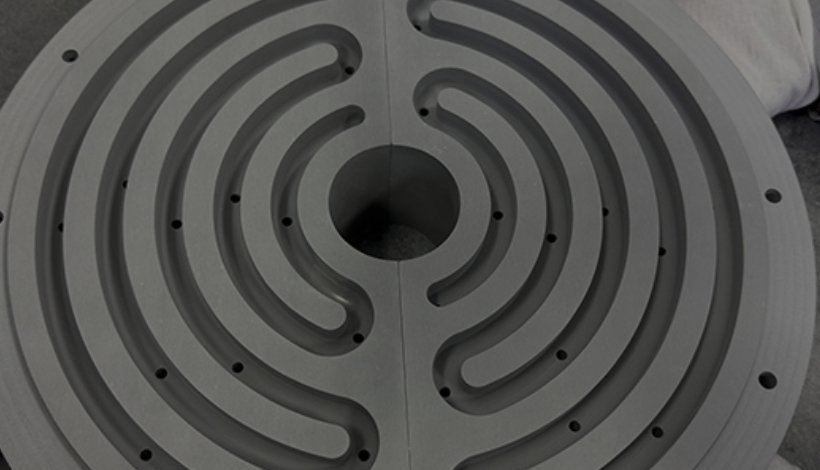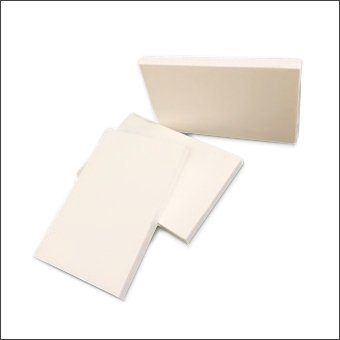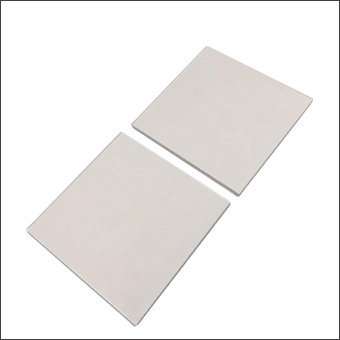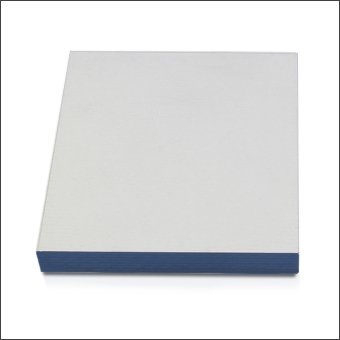h-BN Plate Vs. AlN Plate
h-BN plate and AlN plate are both high-end special ceramic plates, both with high thermal conductivity, excellent electrical insulation and low thermal expansion coefficient. So how to choose?
- Working temperature > 800℃ or contact with molten metal? → Choose h-BN
- Require on-site processing or lubrication? → Choose h-BN
- Pure heat dissipation + limited budget? → Choose AlN
- High frequency/microwave application? → h-BN (lower dielectric loss)

High-performance Boron Nitride Plate Supplier
As a professional supplier of high-performance hexagonal boron nitride (h-BN) plates, Jinghui delivers exceptional thermal management solutions for industries demanding extreme heat resistance, electrical insulation, and chemical stability.
Our BN plates have high thermal conductivity, low thermal expansion, and superior dielectric strength—ideal for electronics, high temperature and heat treatment, chemical, and metallurgical industries.
We can provide customized boron nitride plate per request. With fast delivery and competitive pricing, we’re the trusted partner for global OEMs and tech innovators. Request a datasheet or quote today.
By Applications
Boron nitride plates are used in many industrial fields due to their high thermal conductivity, electrical insulation, high temperature resistance and chemical stability.
Resistant to thermal shock and without contaminating fired products.
Used in glass furnaces, resistant to high temperatures and does not react with molten glass.
As a setter plate for solar cells, ensuring dimensional stability at high temperatures.
Resist corrosion from strong acids, alkalis and molten metals.
An Application Case of Boron Nitride Plate
Case: A photovoltaic company used hexagonal boron nitride (h-BN) plates to replace traditional alumina plates, successfully improving the battery yield by 1.5%, equivalent to an annual efficiency increase of US$2.5 million. Their key breakthroughs are:
- Perfect Thermal Matching
The thermal expansion coefficient of h-BN is highly consistent with that of silicon wafers, and the sintering deformation rate has been reduced from 5.1% to 1.7%.
- Excellent Process Performance
– Purity>99%, avoiding contamination of cells.
– Horizontal thermal conductivity 60W/m∙K, improved temperature uniformity.
– Anti-aluminum paste adhesion, 60% reduction in cleaning frequency.
- Long-Term Economic Efficiency
Although the unit price is 8 times that of alumina, the service life is extended by 4 times (2000 times vs. 500 times), and the payback period is only 4 months.
This case proves that in cell production, 10-15mm thick h-BN plates can solve the yield, efficiency and cost issues at the same time.
Hexagonal boron nitride plate (h-BN Plate) has irreplaceable core advantages in the following industries, mainly due to its unique combination of “thermal conductivity + insulation + high temperature resistance + self-lubrication”.
1. Photovoltaic industry
The only support plate material (10-20mm thick) that can withstand silicon wafer sintering above 1700℃ to avoid deformation of the cell.
2. Metal smelting
As the crucible lining (20-50mm thick) for molten aluminum/copper, the corrosion resistance is more than 5 times that of graphite.
3. Vacuum coating equipment
For heater insulation plates (5-15mm thick), no outgassing under a vacuum of 10⁻⁶ Pa.
4. Wafer transfer system
The self-lubricating property makes it a plate for robot arm grippers (3-8mm thick) to avoid particle contamination caused by friction.
5. High-power laser
As an optical window sealing ring (5-10mm thick), resistant to 10kW/cm² laser shock and without plasma sputtering.
6. Strong acid reactor
The only lining plate (10-30mm thick) that can withstand HF for a long time, and its life is 20 times that of PTFE.
Cubic Boron Nitride (c-BN) is a superhard crystal form of boron nitride (BN). Its atomic arrangement structure is similar to that of diamond (cubic crystal system). Its hardness is second only to diamond (microhardness is about 50 GPa), but it has higher thermal stability (temperature resistance up to 1400°C, diamond will oxidize at about 800°C in air).
Although cubic boron nitride (c-BN) is the “king” in the field of superhard materials, it is currently unable to be made into large-sized independent ceramic plates like h-BN due to the limitations of the synthesis process. It is mainly used in the form of cutting tools, abrasives and coatings.
Hexagonal boron nitride (h-BN) is named “white graphite” because its layered crystal structure and physical properties are highly similar to graphite, but its appearance is white.
The core differences between h-BN plate and graphite plate are shown in the table below.
| Feature | h-BN Plate | Graphite Plate |
| Color | White | Black |
| Electrical Property | Insulator (bandgap width ~5.9 eV) | Conductor (high in-plane conductivity) |
| Chemical Stability | Oxidation resistant (stable to 900°C in air) | Easy to oxidize (burn at >400°C in air) |
| Thermal Conductivity | In-plane 35-75 W/(m·K) (the best in insulators) | In-plane ~2000 W/(m·K) (ultra-high thermal conductivity) |
| Applications | High temperature insulation, electronic heat dissipation | Electrodes, thermal conductive materials |
The price of boron nitride plate is relatively high, and it belongs to high-end special ceramic materials. The core reasons for its high price are:
- High cost of raw materials: The price of high-purity boron nitride powder (>99%) is 20~50 times that of alumina powder.
- Complex process: Hot pressing sintering (HP-BN) requires high temperature (above 1800°C) + high pressure (20MPa), and the energy consumption and equipment cost are extremely high.
- Low production scale: Compared with alumina ceramics, the market demand for BN plates is small and the scale effect is weak.
We recommend that you weigh performance and cost according to application requirements.







